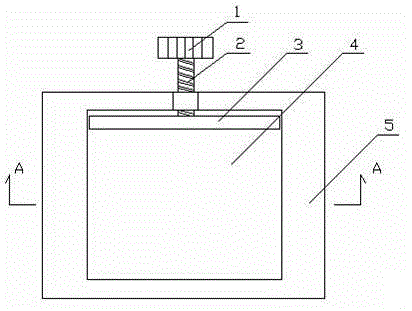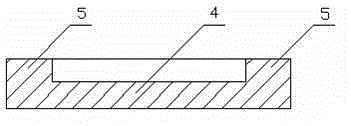Method for making microcosmic model of real rock core
A technology of microscopic model and production method, which is applied in the production of high-definition real rock core microscopic model, grinding holder and adhesive, and ultra-thin fields, which can solve the problems of low imaging definition, low degree of simulation, and influence on light transmission problem, to achieve the effect of high imaging definition and clear boundary
- Summary
- Abstract
- Description
- Claims
- Application Information
AI Technical Summary
Problems solved by technology
Method used
Image
Examples
Embodiment 1
[0031] The real rock core micro model making method comprises the following steps:
[0032] 1) Select the cylindrical core for the experiment, measure and record the permeability and porosity;
[0033] 2) Put the core into a glass tube, add an appropriate amount of rosin, and heat (>180°C) to saturate for 10 hours;
[0034] 3) Cool at room temperature, cut the core into 2~3mm thin slices with a diamond core slicer, smooth and clean the surface of the core, and do grinding pretreatment;
[0035] 4) After mixing cyanoacrylate and rosin in a ratio of 1:1, the core slices are glued and fixed on the chrome glass;
[0036] 5) Fix the chrome glass with the core slice attached to the grinding holder, grind the surface of the slice, first use coarse emery to rough grind on the grinder, and grind the specimen to a thickness of about 200 μm. After that, finely grind with fine emery to smooth and polish the surface. When the fine grinding reaches about 80μm~150μm, the sample is placed ...
PUM
| Property | Measurement | Unit |
|---|---|---|
| thickness | aaaaa | aaaaa |
| thickness | aaaaa | aaaaa |
| melting point | aaaaa | aaaaa |
Abstract
Description
Claims
Application Information
 Login to View More
Login to View More - R&D
- Intellectual Property
- Life Sciences
- Materials
- Tech Scout
- Unparalleled Data Quality
- Higher Quality Content
- 60% Fewer Hallucinations
Browse by: Latest US Patents, China's latest patents, Technical Efficacy Thesaurus, Application Domain, Technology Topic, Popular Technical Reports.
© 2025 PatSnap. All rights reserved.Legal|Privacy policy|Modern Slavery Act Transparency Statement|Sitemap|About US| Contact US: help@patsnap.com


